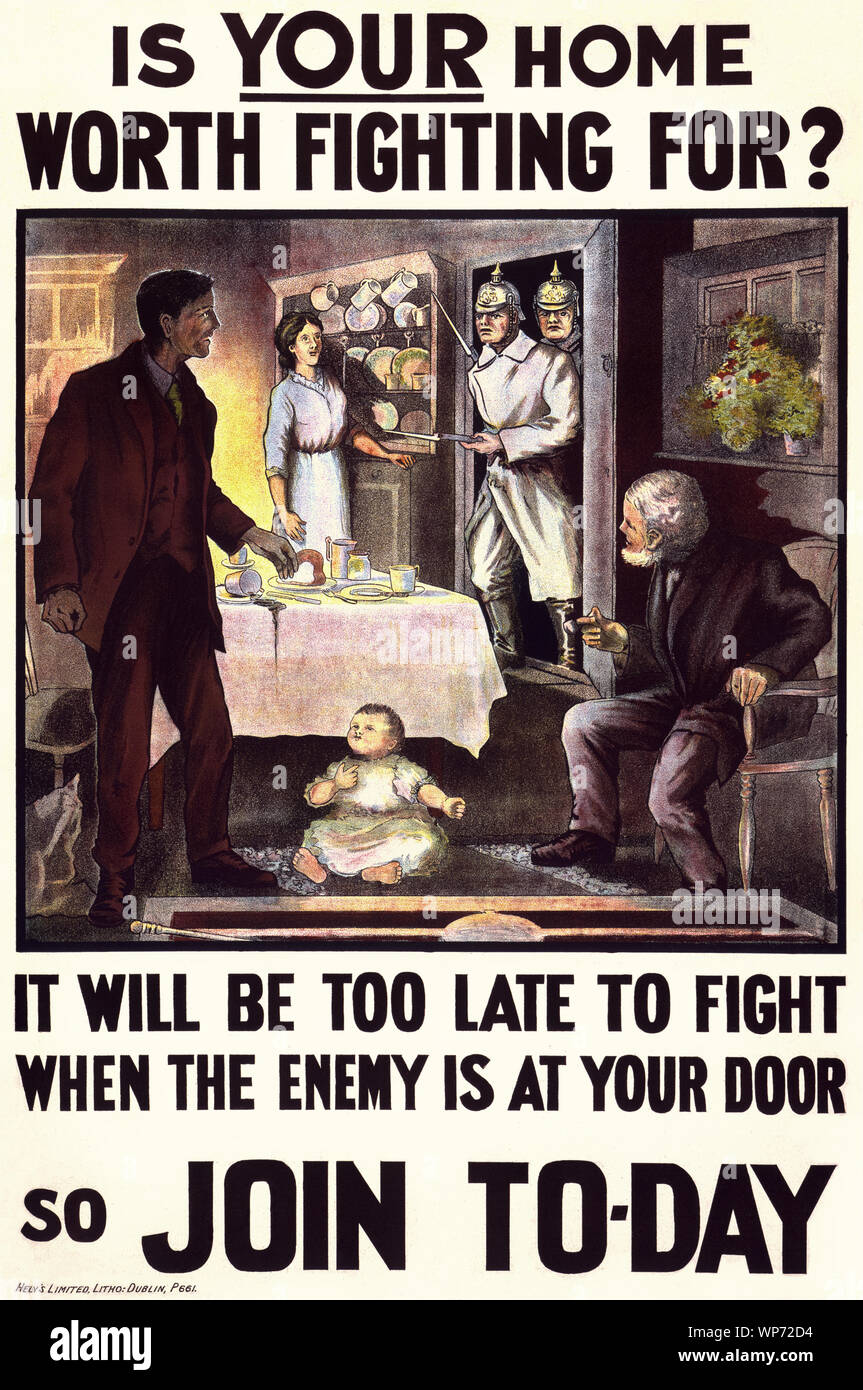During World War I, (1914–1918) the impact of the poster as a means of communication was greater than at any other time during history, asking men to do their duty and join the military forces. The perceived threat from Germany at the outbreak of war, meant most Irish people, regardless of political affiliation, supported the war in much the same way as their British counterparts, with both nationalist and unionist leaders initially backing the British war effort.

Image details
Contributor:
De Luan / Alamy Stock PhotoImage ID:
WP72D4File size:
30.9 MB (2.1 MB Compressed download)Releases:
Model - no | Property - noDo I need a release?Dimensions:
2680 x 4036 px | 22.7 x 34.2 cm | 8.9 x 13.5 inches | 300dpiDate taken:
1 September 2019Location:
IrelandMore information:
This image is a public domain image, which means either that copyright has expired in the image or the copyright holder has waived their copyright. Alamy charges you a fee for access to the high resolution copy of the image.
This image could have imperfections as it’s either historical or reportage.
During World War I, (1914–1918) the impact of the poster as a means of communication was greater than at any other time during history, asking men to do their duty and join the military forces. The perceived threat from Germany at the outbreak of war, meant most Irish people, regardless of political affiliation, supported the war in much the same way as their British counterparts, with both nationalist and unionist leaders initially backing the British war effort. The posters had a remarkable ability to inspire, inform, and persuade combined with vibrant design trends in many of the participating countries to produce thousands of interesting visual works.